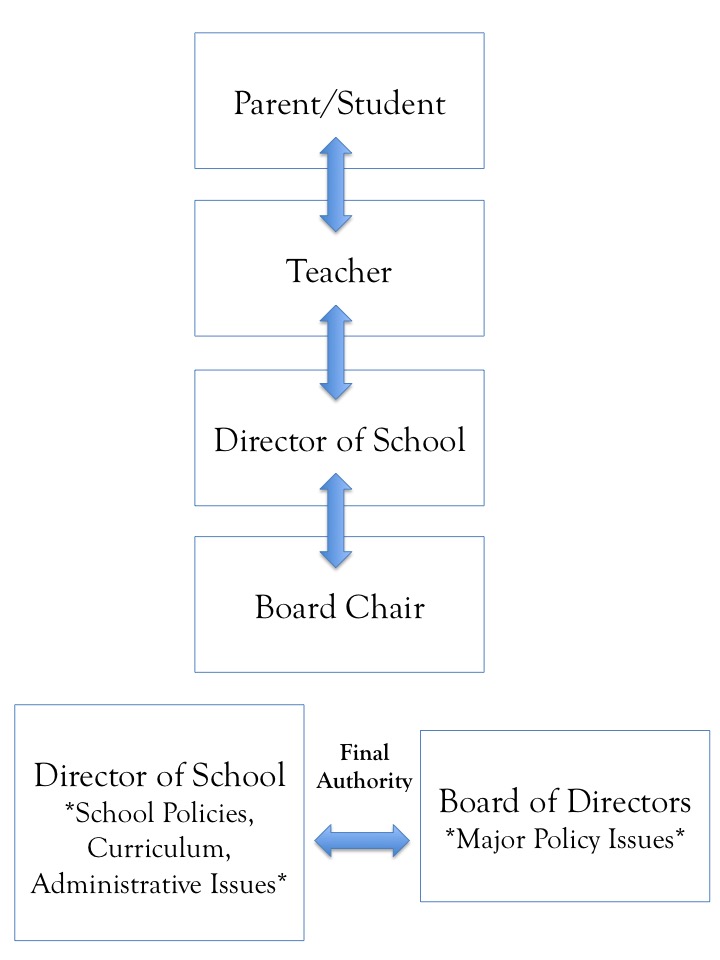
Chain of Communication
We believe in compassionate and clear communication that is transparent. Communication is a critical part of creating trusting, caring, and effective relationships together and in creating a supportive educational environment for our students. The accompanying communication chart is intended to guide communication when an issue arises that requires resolution or when, in effect, free and uninhibited communication is in danger of being interrupted. Our experience has been that when such issues do arise, they are most effectively resolved by following the “Chain of Communication” represented by the chart.
If a student experiences a problem or faces an issue that he or she believes requires resolution, the first point of contact should be that student’s teacher. If the problem remains unresolved, then the issue is to be taken to the Director of School. It is vital for every student to understand that he or she should always feel free to speak with any member of the faculty or administration concerning a problem.
If a parent or a teacher has an issue that he or she believes requires resolution, the same “Chain of Communication” should be followed. It is particularly important for parents to go first to the teacher involved, although the Director of School and Board Chair is also always available.
In the case of a grievance with any faculty or staff member, all faculty & staff should address their concerns to the Director. In the case of a grievance with the Director, all faculty and staff should address their concerns to the Faculty Board Liaison or College Chair. In case of a grievance with the Director, Faculty Board Liaison or College Chair, all faculty and staff should address their concerns to the Assistant Director or Chair of the Board.
The Director of School will make final decisions concerning curriculum, school operations, and administrative issues. The Board is responsible for major school policies.
Communication is—by definition—a mutual and dynamic process. Good communication does not always result in agreement. The “Chain of Communication” ensures that everyone who wishes to speak will be heard. It is inevitable that some who are heard will not hear, in return, the answer they wish to hear. That too is a circumstance vital to healthy communication.
Ultimately, if all members of the school community communicate directly and responsibly, it will be rare for an issue to reach the bottom line of the chart. More importantly, responsible and direct communication will guarantee a healthy school environment.
